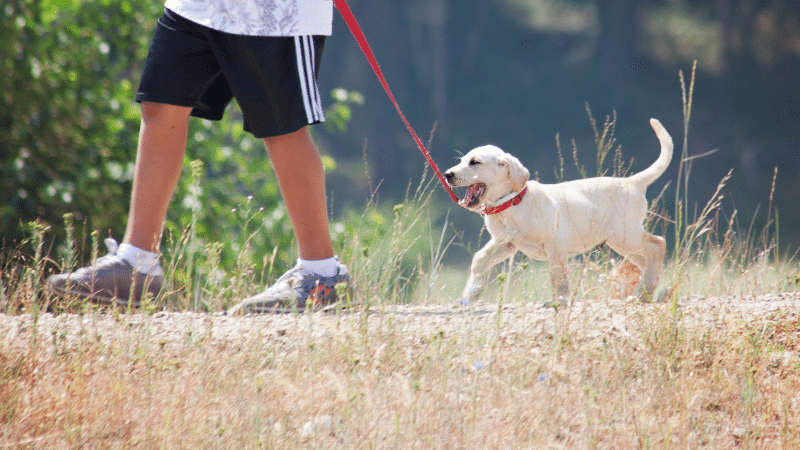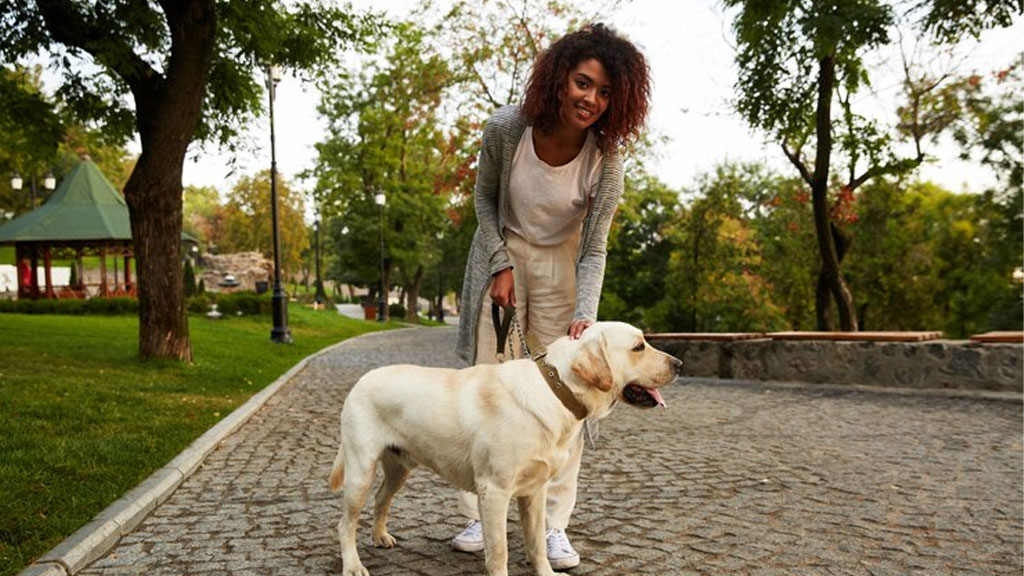It seems that you can only do that magic when your dog is grown up and professionally trained, but with an adequate balance of a leash and simple training, you can teach your dog to follow you without a leash. A leash-free walk is not only freedom but also trust, communication, and consistency between you and your dog.
What most pet parents want is an obvious one to have normal walks where their dog walks around them, listens, and goes on a secure exploration. Without proper preparation, however, prematurely entering off-leash walking may be stressful to you, your canine companion, or both. This is the reason why leash handling and introductions of training techniques are the key to success.

We shall take you step-by-step through all the answers you require, including learning how to know when your dog is ready, how to create and train recall, and master the use of the leash to your advantage in a hands-free session. Regardless of whether you are new to dog walking or are looking to transform your daily walks to the next level of walking with your pooch, the following tips will make you feel confident and connected in every step forward.
Preparing for the Walk
1. Proper Equipment
The selection of the equipment is the key to a successful walk.
- Collar or Harness: Use a comfortable, well-fitted harness. When your dog is a puller, you want to consider a no-pull harness.
- Leash: Use a heavy-duty leash that is non-collapsible in size, such as a 4-6 foot leash, for good control and safety.
- ID Tag: A prepared identification tag should also be put on the dog in order to protect it.
- Poop bags: Your pet is your responsibility and as such cleaning up after your dog is part of pet ownership. Carry waste bags all the time when you go for a walk.
- Treats or Rewards: Rewards happen to be the most priceless during training. They can be used as good behavior reinforcement and are beneficial during the process of learning.
2. Training Basics
Learn basic commands of your dog, such as sit, stay, and heel, before you take your dog out. Those basic orderings are a great asset to a good behavior walk and strengthening the relationship between a human and a dog.
Dog Walking Techniques
On the Leash Walking
1. Begin in a Controlled Environment
Start training in a place like your backyard, where there is low distraction and quiet. The environment will assist you in making your dog concentrate on you and thereby mark the beginning of positive training experiences.
2. Positive Reinforcement
As your dog when its walking with you and is doing well, give it positive behavior and reward it. Apply treats, verbal praise, and petting as a standard practice and liberally. It is important to understand what motivates your dog; you should use treats as a form of reinforcement because most dogs are food motivated.
3. Stop and Start
Once your dog begins to pull on a leash, immediately stop walking. Wait until they come back to you, reward them for their wishful behavior, and then continue the walk. They should also make it consistent to strengthen the relationship between the targeted behavior and good rewards.
4. Change Directions
Change direction when you go out to walk your dog to make him/her stay interested. This keeps them interested as well as paying attention to their cues, thus furthering an increase in responsiveness.
5. Be Patient
The process of training does not happen overnight, and therefore, such impatience can be a roadblock. Remain relaxed, and do not become a frustrated person. In generating a positive experience when walking, positivity, consistency, and patience are major factors.
6. Safety Considerations
To avoid the possible risk and keep both you and your dog safe, prefer the quiet and safe streets and parks to explore.
7. Be aware of the hazards
Watch out for broken glass, sharp things, and anything that might be harmful while you’re walking. To have a safe walking experience, vigilance is important towards the surrounding environment.
8. Be Weather-Aware
Adjust the time that you should spend on walking and the level of intensity according to the weather conditions. Harsh weather, like heat and cold, might demand that the walks be shorter.

Leash Etiquette
Short Leash in Crowded Areas
Use a shorter leash in busy places to give you better control of your dog. Such a precaution will keep both you and your pet safe as well as other people.
Allow Exploration
As you have them on a leash, you can give your dog freedom to sniff any object around to familiarize himself or herself with the environment. This is natural behavior that helps to stimulate the mind and achieve more.
Avoid Retractable Leashes
Retractable leashes could be dangerous and do not offer the required management. Go with a non-retractable, standard leash that will make the walking process safer and easier.
The Importance of Proper Dog Walking
Physical Exercise
The daily walks that are part of normal ownership of dogs should not be viewed as mere exercise; they are vital. They provide a vital way of letting your dog burn off his excess energy, help in keeping the dog at an optimal weight, and improve the general cardiovascular condition. To enjoy the importance of these walks in the life of your pet, it is important to know about the physical benefits of these walks.
Mental Stimulation
Walking is not only a physical activity, but it is also a chance to get strong mental stimulation. Dogs have a very sensitive sense that presents the world to them in terms of smell, sight, and even sound. A walk is transformed into a multisensory experience, making their lives richer and making their companions more awake, engaged, and mentally content.
Socialization
Dogs are social animals, and walking is a social process. More than the physical activity, it gives them different people, animals, and surroundings which are very vital in assisting them to become well adjusted and comfortable in many circumstances. Knowledge of the social aspect of walks plays an important role in the general happiness and behavioral development of your dog.
Routine
Routine dog walking not only applies to consistency, but it is a building block of behavioral expectations. Walking your dog at the same time every day and bringing it to the same places feeds the sense of security and shows your dog how it should act. This practice is one of the most productive elements of an enjoyable composure and well-behaved walking, particularly with the exposure of new scenery.
Frequently Asked Questions
The ideal duration varies by breed and age, but a general guideline is 30 minutes to two hours for most dogs. Adjust based on your dog's energy level and breed characteristics.
It's advisable to avoid retractable leashes. Standard, non-retractable leashes provide better control, reducing safety risks associated with longer, less predictable lengths.
Loose leash walking promotes a safer and more enjoyable experience for both you and your dog. It encourages responsiveness to commands, minimizing pulling and ensuring better control.
Change directions frequently to keep your dog engaged. Aim for every few minutes, as this helps maintain their attention on you and reinforces positive walking behavior.
Establishing a routine creates behavioral expectations, providing your dog with a sense of security. Consistent walks at the same time and familiar places contribute to a calm and well-behaved walking experience.






